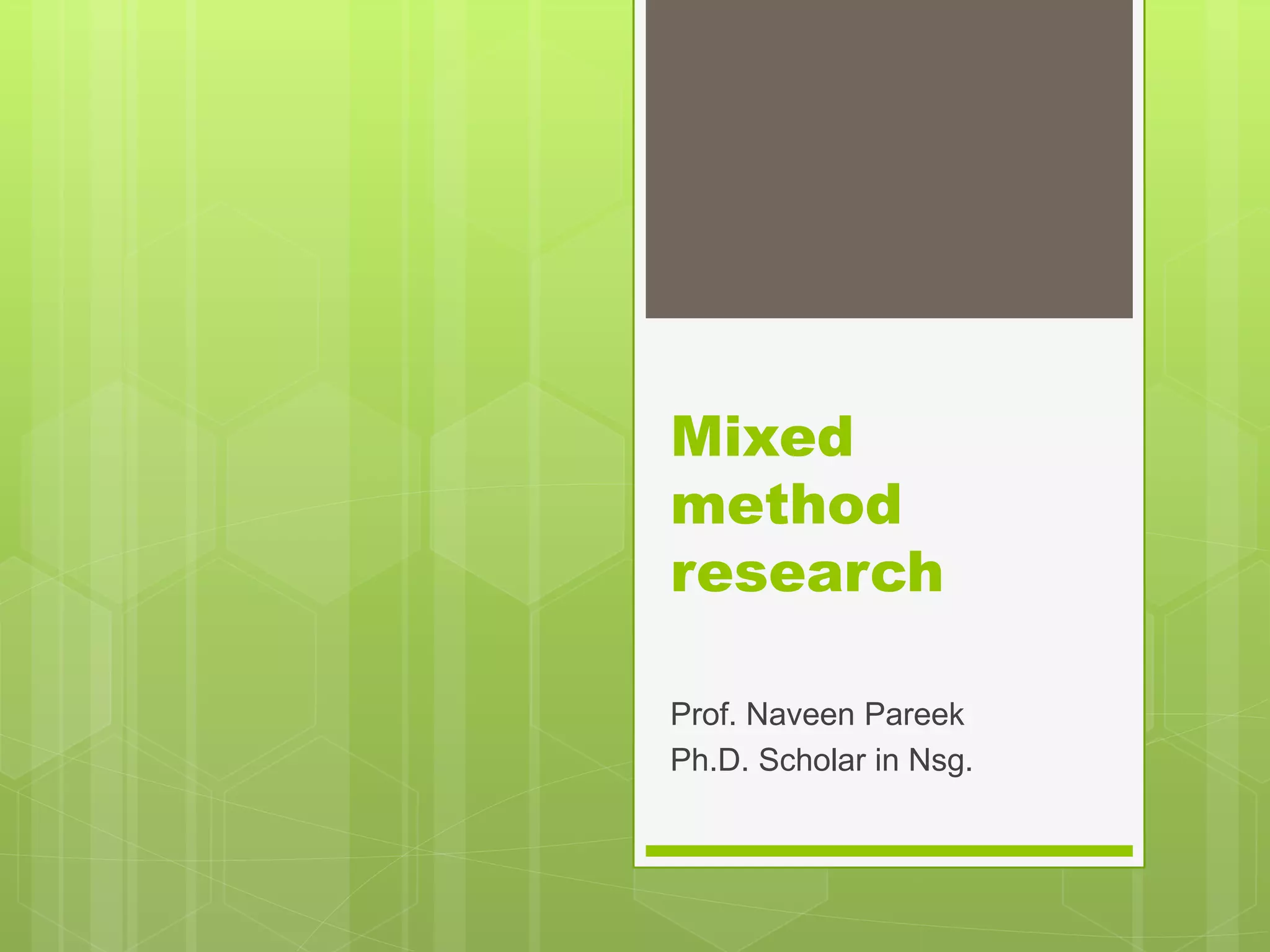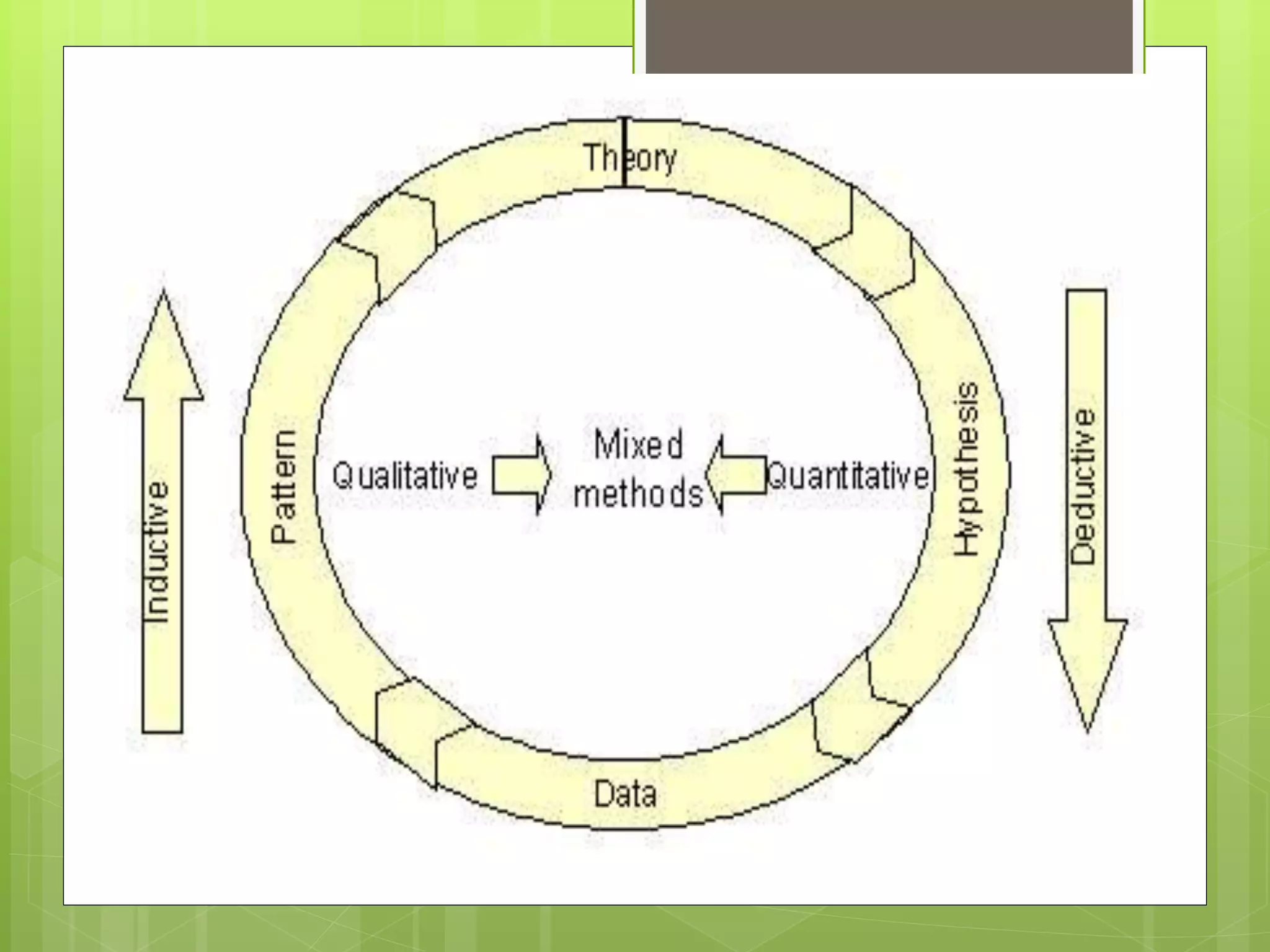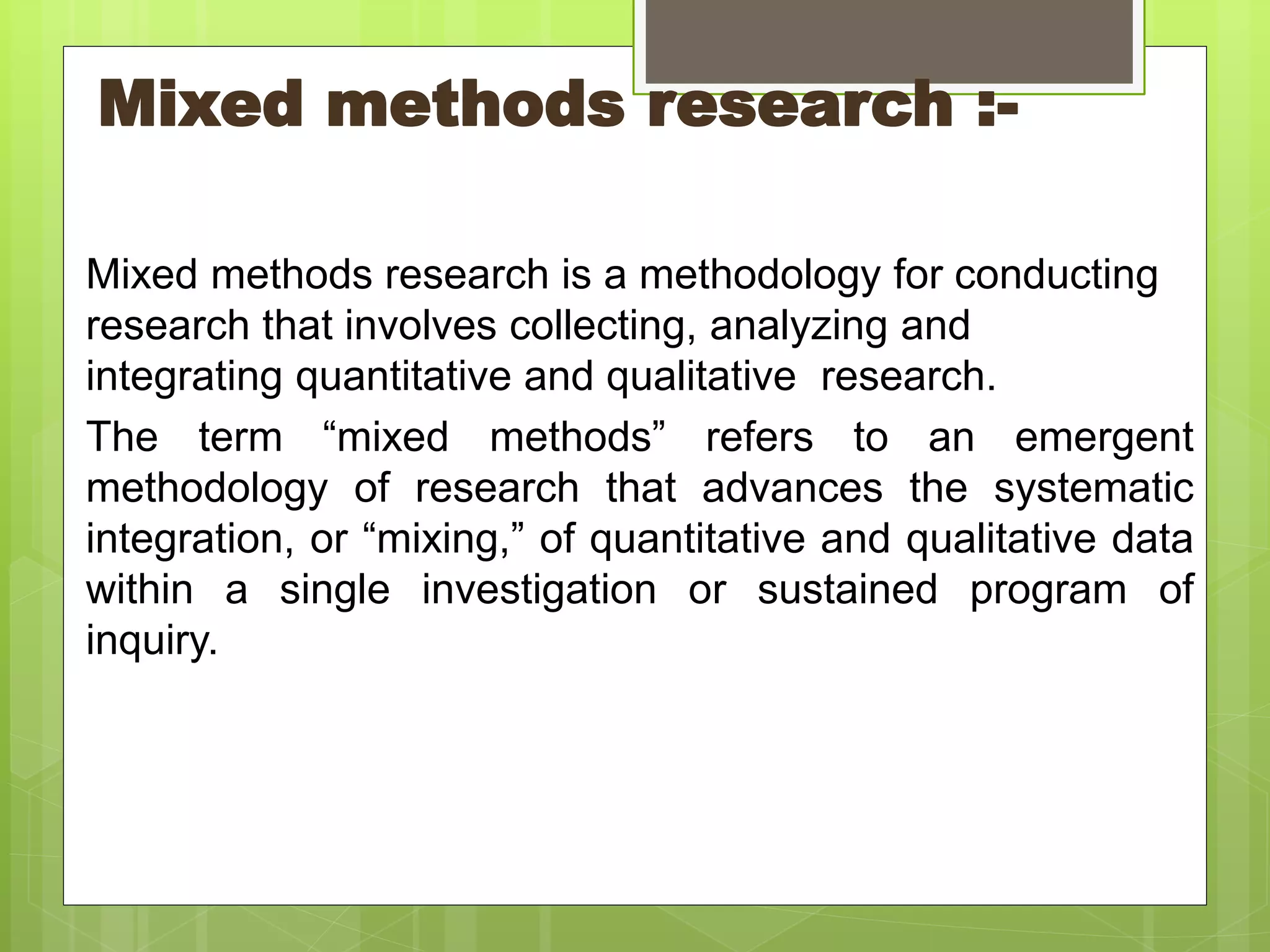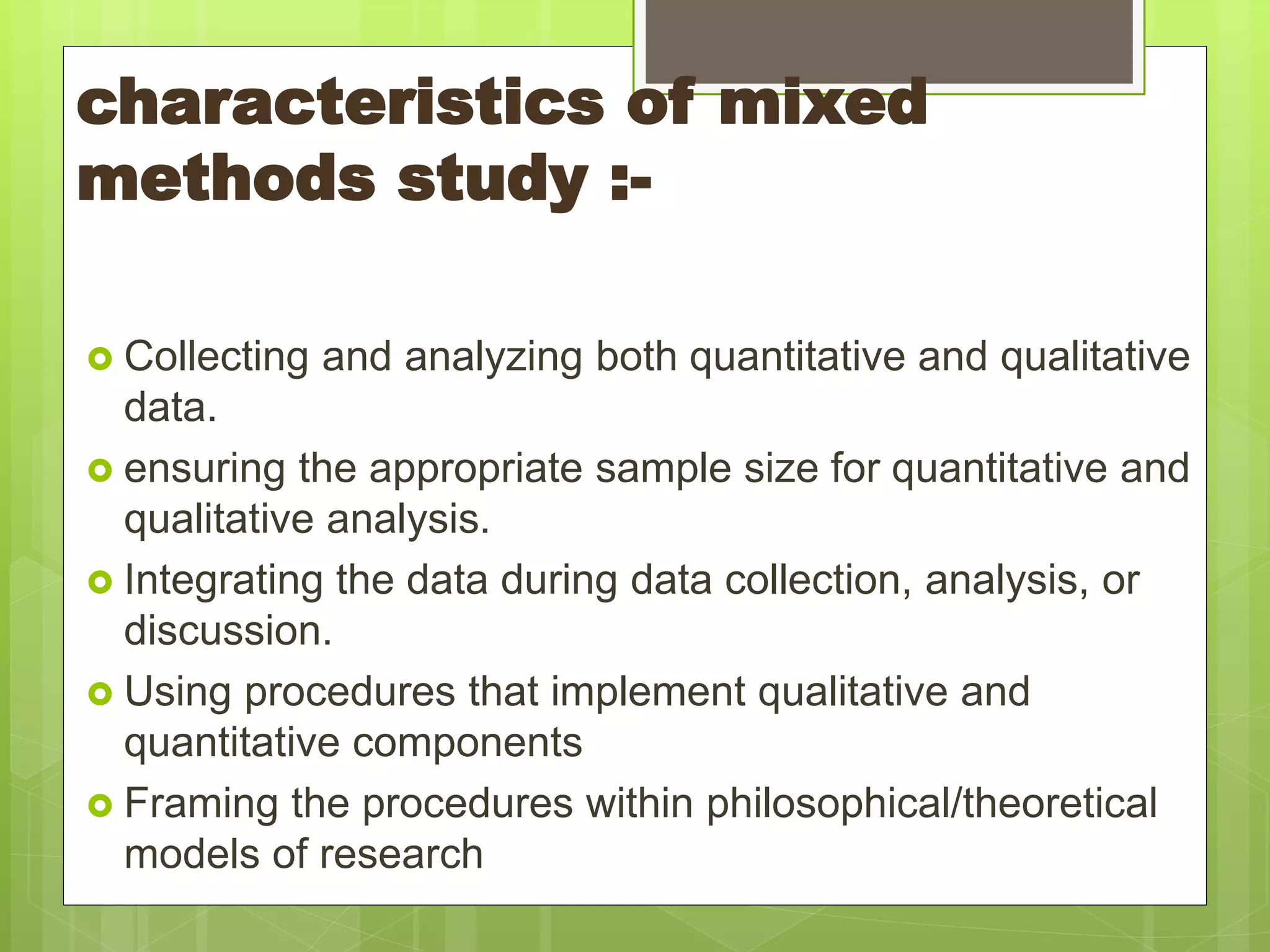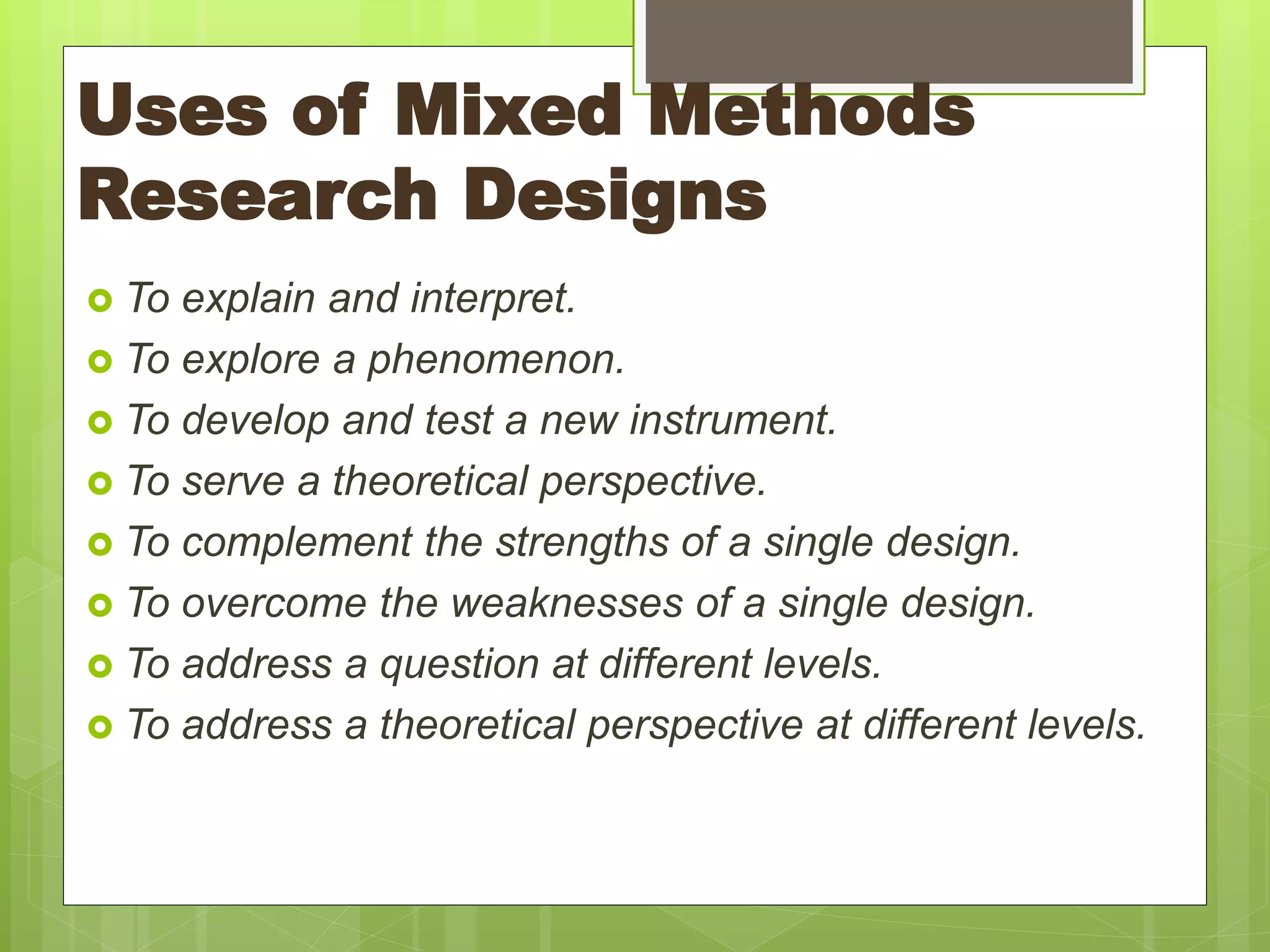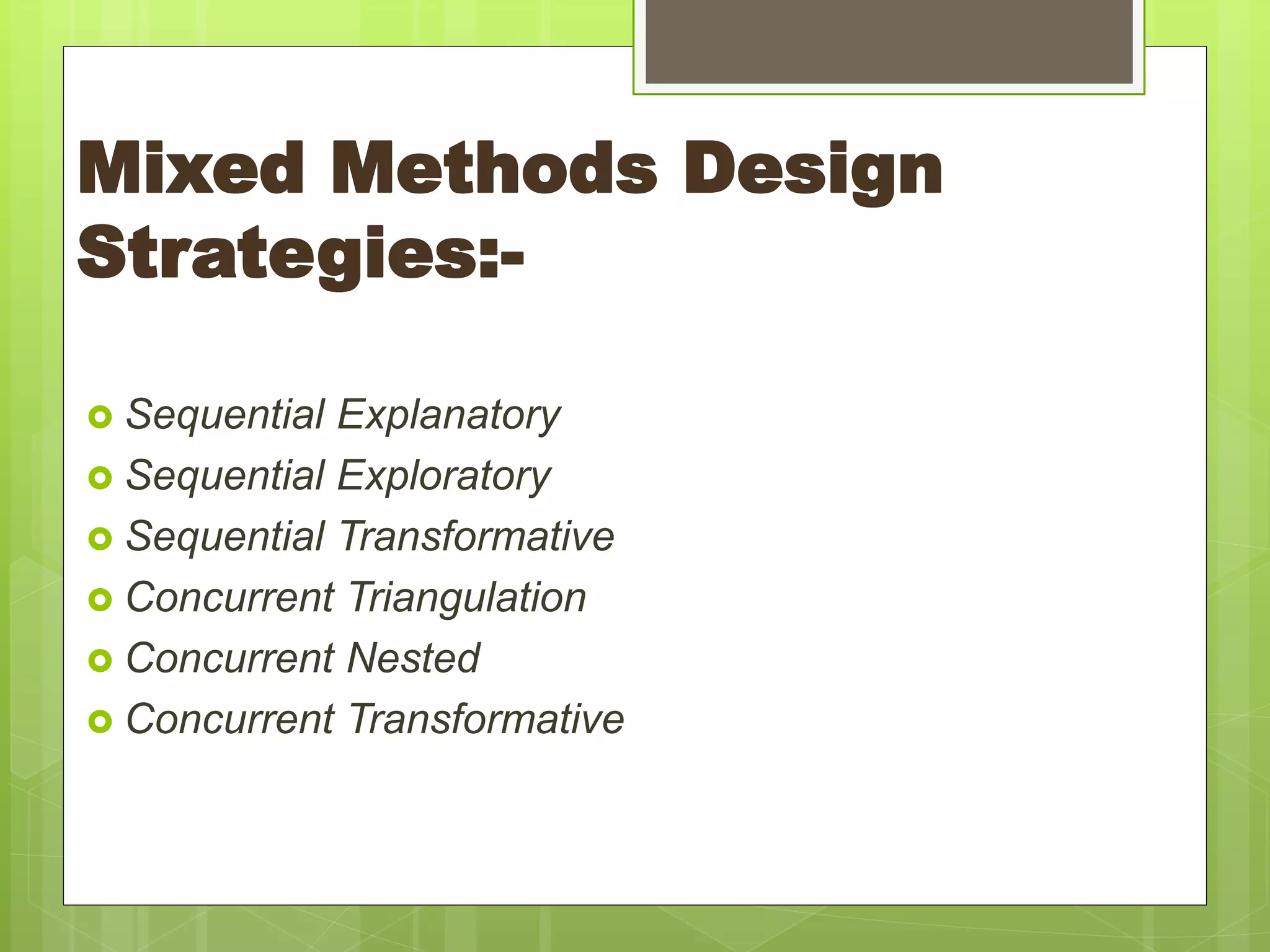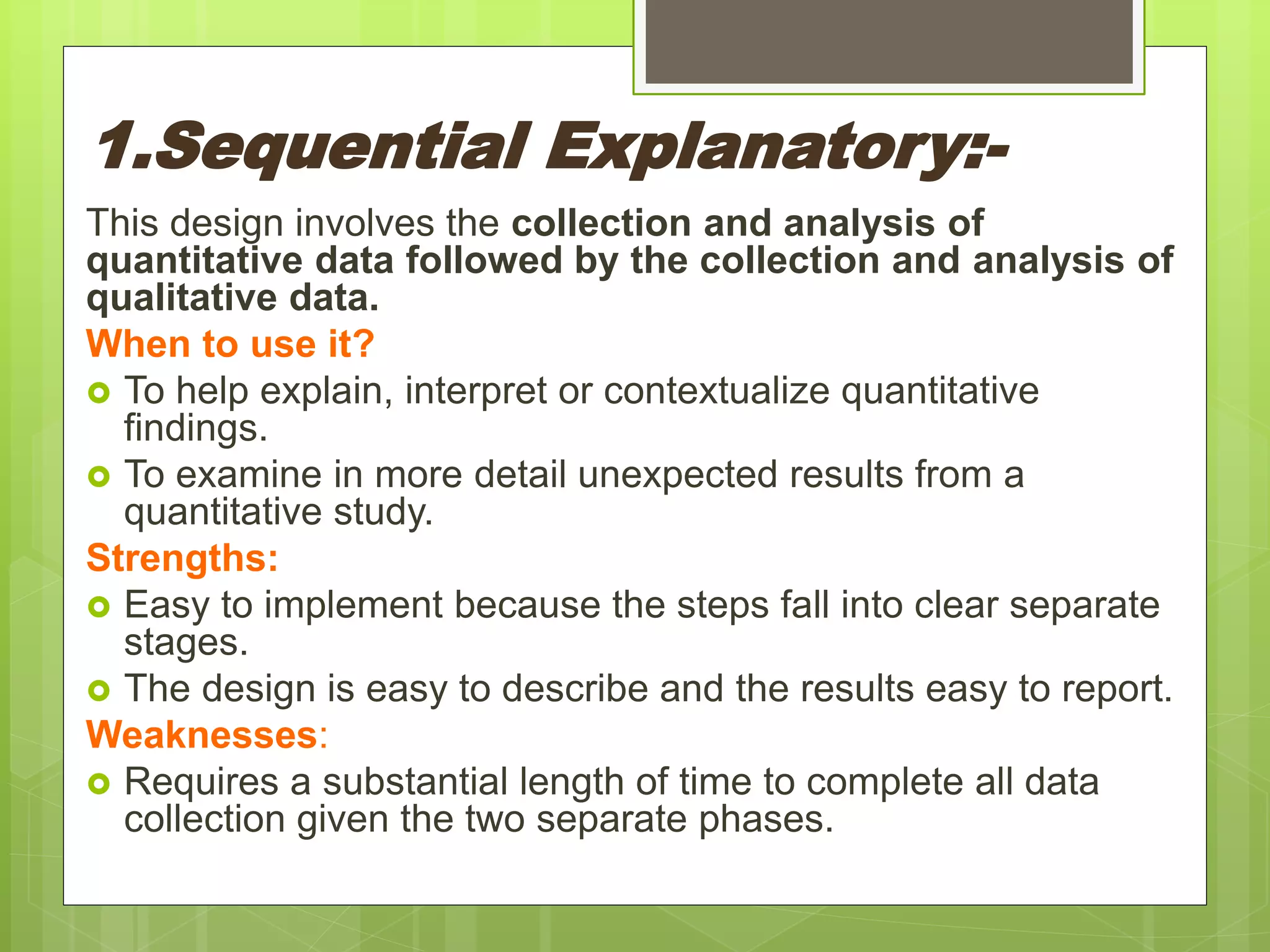Mixed methods research involves collecting and analyzing both quantitative and qualitative data within a single study. It originated in the social sciences and has expanded to fields like nursing. There are multiple mixed methods research designs including sequential explanatory, sequential exploratory, concurrent triangulation, and concurrent transformative. These designs differ in whether the quantitative and qualitative components are conducted sequentially or concurrently, and whether one method has priority over the other. The purpose is to develop a more comprehensive understanding than a single method could provide alone.
